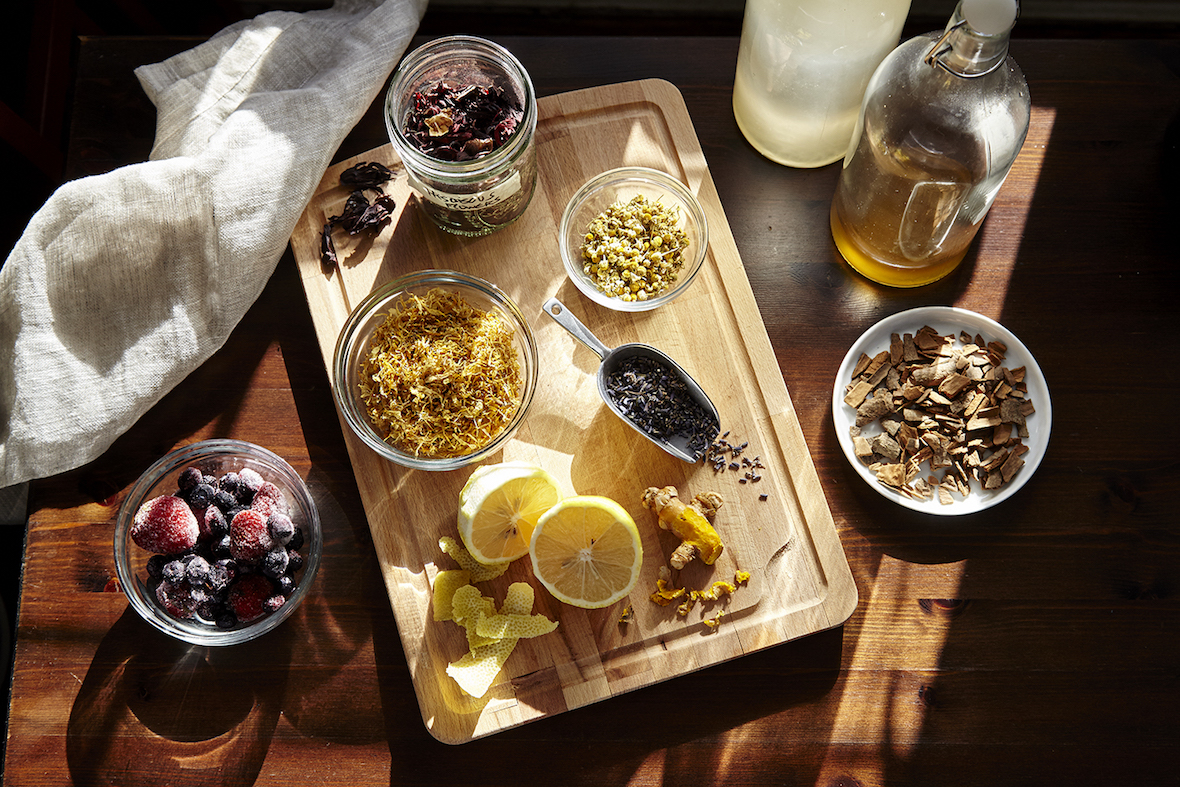
Fermentation is all about transformation. First you start with your chosen food or drink and create an environment conducive to the growth of bacteria and yeasts. They break down while they digest sugars, converting them into alcohol and creating acids and bacteria that are generally good for us. Kombucha, kvass, beer, ginger beer and mead (most of the drinks mentioned in this issue, in other words) are just a few examples, but for this exercise, we’re just going to focus on the first.

Let’s say you already make amazing kombucha (or at least can get your hands on some) and want to take it to the next level by developing different flavors. This is where secondary fermentation becomes handy and the basic process is fairly simple: Just take your initial and completed ferment, transfer it to a new vessel and then add flavoring agents—fresh fruit, dehydrated fruit, whole spices, herbs and juices to name a few—for a certain period of time. The waiting game can range anywhere from two days to several weeks or months—it just depends on your desired flavor and carbonation level.
In general before I start this process, I like to think about flavor combos and then quantities, always keeping the strength of those flavors in mind. It’s also important to taste your experiment daily since, say, you might ferment something for two days and realize it’s weaker than you’d like.
There are a million and one secondary fermentation combinations and some of my favorites for kombucha are blueberry peach basil, lavender lemonade, elderberry ginger and sage with tart cherry. For some initial inspiration while you discover yours, here’s our recipe for blueberry ginger spice kombucha:

Makes 1 gallon
1 gallon of kombucha
2 inches ginger root cut into small ½-inch pieces
½ cup frozen blueberries
Juice and zest of ½ a lemon, or less if you prefer a less bitter taste
- Add the frozen blueberries (we find frozen berries in general work best for secondary fermentation), ginger, lemon juice and lemon zest to the kombucha.
- Put a lid or cap on the vessel and let sit in a cool, dark place for 2 to 7 days. Taste daily, and once you like the flavor, use a strainer and funnel to remove the flavoring agents.
- You can now stop here and transfer your liquid to a couple of 2-liter soda bottles, pop-top glass jars or other storage vessel of your choice. If you’d like more carbonation, though, recap and return to the cool, dark environment for a couple more days, tasting regularly.
- Once you’re pleased with your product, store in the fridge to slow down the fermentation process and enjoy!
Illustrations by Chamisa Kellogg.



